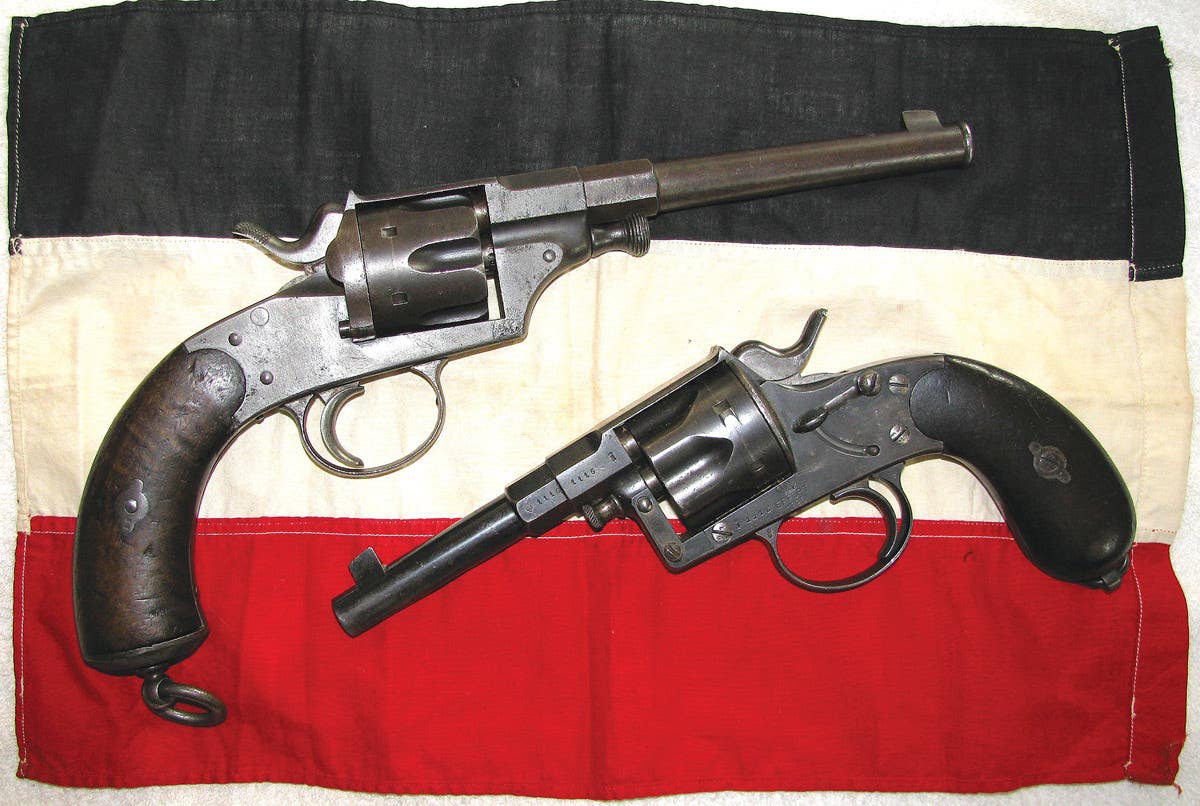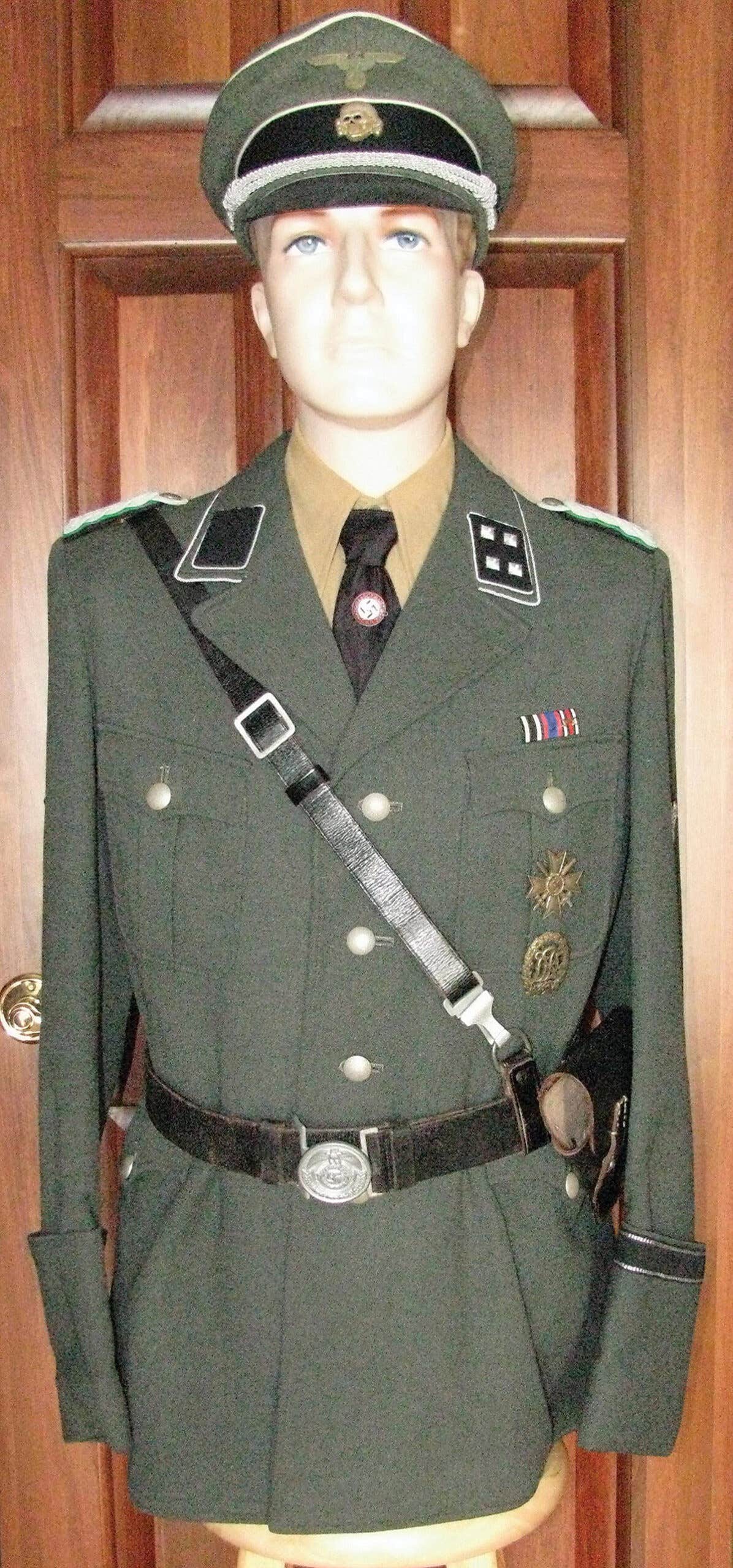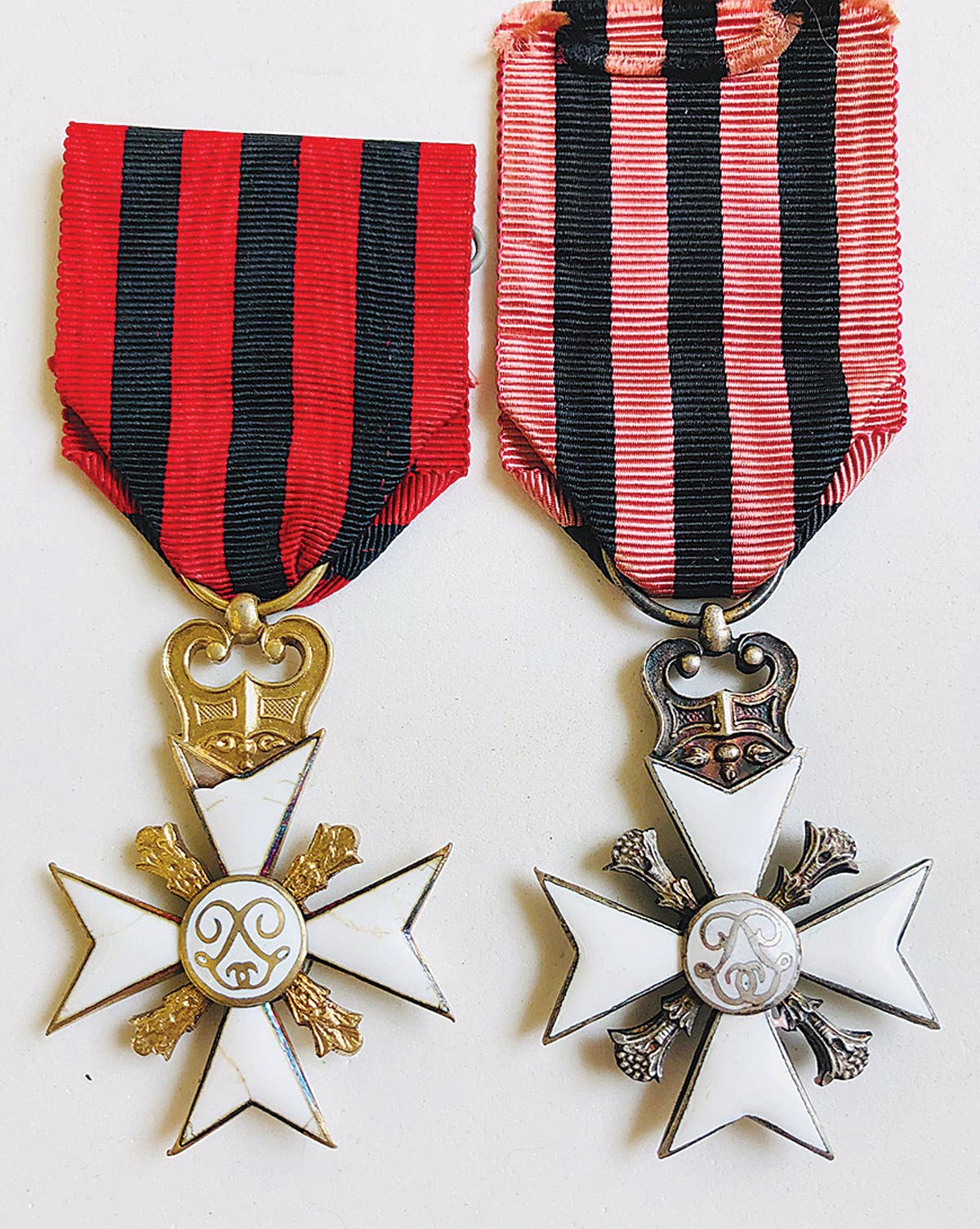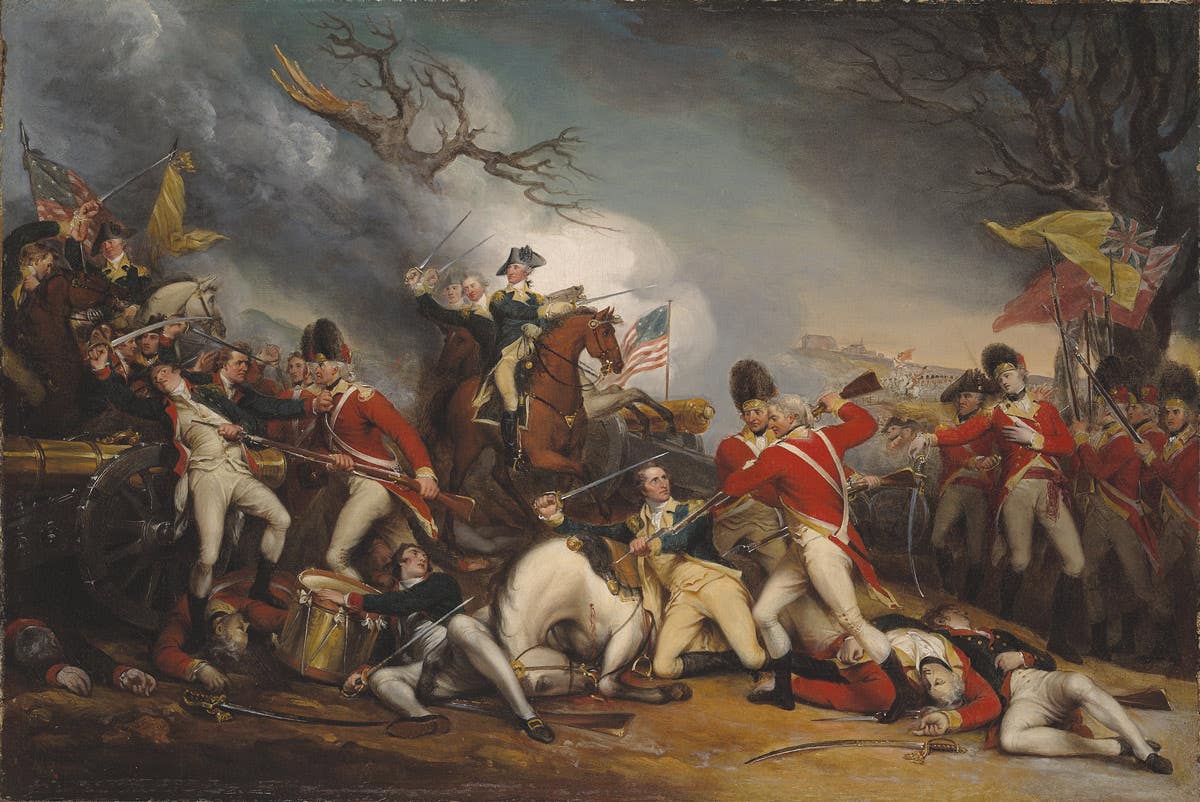The Austrian Anschluss Medal
Commemoration of Hitler’s first great victory–The Anschluss was Hitler’s first big “foreign policy” success. It was only natural that this “great” event should be remembered in the form of a medal.
On March 15, 1938, Adolf Hitler stood on the balcony of the Hofburg Palace in Vienna overlooking the famous Heldenplatz (Heroes Square). Tens of thousands of people had gathered there to hear him declare that Austria had now been incorporated into the Third Reich. Remarkably, it was a decision he had only settled on three days before! The two German states were finally one and the crowds cheered and saluted wildly. His dream of a union between Germany and his homeland of Austria, a desire he had spoken of within the first paragraph of his book Mein Kampf, had been attained. The Anschluss was Hitler's first big "foreign policy" success. It was only natural that this "great" event should be remembered in the form of a medal.
Adolf Hitler is seen in a March 15, 1938, photograph triumphant on the balcony of the former Austrian Imperial Palace, March 15, 1938. It had been only five years since he came to power in Germany that he successfully annexed Austria.
THE AUSTRIAN ANSCHLUSS MEDAL
On May 1, 1938, Hitler instituted the "Medal of March 13, 1938" ("Medaille zur Erinnerung an der 13. Marz 1938"). Designed by Professor Erwin Puchinger, an Austrian national, the medal was awarded to all members of the military and political departments who had participated in the annexation. Approximately 318,600 of the medals were issued.
Produced from brass or tombak-bronze the Anschluss medal was matt silver in color and suspended from a predominantly red ribbon with thin colors of black and white to the edges. The design featured two figures on the obverse, the first one holding a Nazi banner, assisting his comrade onto a victory podium displaying the German eagle. The tiny detail of the broken shackles symbolized the freeing of the Austrian people. The reverse side featured the official date of the annexation, March 13 and the popular Nazi slogan; "Ein Volk, Ein Reich, Ein Fuhrer." The design incorporates five swastikas. The medal could be worn as a single decoration, as part of a group or simply as a ribbon bar on the upper left hand-side of the tunic.
HISTORICAL BACKGROUND
The idea of a union between Germany and Austria was nothing new. Hitler wasn't the first to raise the idea. His words written in 1924 in Mein Kampf, merely repeated a common sentiment of the time.
Indeed, the union of all German-speaking states into one nation had been a recurring issue during much of the 19th century when the political forces of nationalism and liberalism were at work. However, the rivalry which developed between the Prussian and Austro-Hungarian Empires hindered, rather than helped, any full union from coming into being. The proclamation of the German Empire in 1871 under Kaiser Wilhelm I ensured this separation. It wasn't until the dissolution of both of these empires at the end of WWI that the idea was reignited amongst German nationalists.
The March 15 crowds were excited, aware that history was being made. Though the future seemed positive, within seven years Soviet tanks would be rolling along the streets of Vienna.
While much post-WWI study concentrates upon Germany's economic and social turmoil, it should be remembered that Austria, too, had just as much difficulty. Reduced in size in terms of both its population and geography, the new state found it difficult to adjust to the harsh, new economic realities. As in Germany, economic and social upheaval in Austria created the breeding ground for extremism and right-wing nationalism. The Treaties of Versailles and St. Germain, which forbade the incorporation of the new state of Austria into any larger German State (for fear of creating another powerful German Empire) inadvertently created a cause for many to fight against.
In March 1931, the Weimar Government of Germany negotiated a Customs Union with Austria. The French scuttled this plan by withdrawing a number of financial loans it had made to Austria. The consequence of this action led to the collapse of a number of banks in Austria, resulting in further political and economic instability.
The "Anschluss Medal" of 1938 was the first in a series of three medals commemorating the territories annexed to Germany by Hitler. The reverse bears the "Ein Volk, Ein Reich, Ein Fuhrer" slogan with three swastikas between the words.
While the accession of Engelbert Dollfuss to the Chancellorship in May 1932 gave some hope of stability to Austrian politics, Dollfuss was forced to govern by emergency decree within a year.
As in Germany, parliamentary democracy wasn't working too well in Austria either! In July of 1934, Dollfuss was assassinated by a group of Austrian Nazis who saw the chance for a coup d'etat and an Anschluss (a political union) with Germany. Their plans were foiled, however, when Italian troops under Mussolini, a long time supporter of Dollfuss, massed along the Italian/Austrian frontier in a show of support for Austrian independence. This action prevented any move by Hitler into Austria. The assassins were captured and executed. However, the seeds for further political maneuvers were sown.
Two significant events in 1936 laid the foundations for an eventual Austrian Anschluss. The first was Hitler's re-militarization of the Rhineland in March. The second was the alliance formed between Hitler and Mussolini in October.
Against French and British acquiescence, Hitler created a stronghold for Germany in the Rhineland, meanwhile making a situation that made it hard for the western allies to act against any further German expansion. Kurt Schuschnigg, Dolfuss's successor as Austrian Chancellor, saw the danger and embarked on a course of appeasement with Hitler. In July 1936, Schuschnigg and Hitler had come to an agreement in which Germany would not be involved in Austria's politics while Austria allowed Austrian Nazis into government.
As shaky an agreement as this may have been, Schuschnigg was further undermined when in October of that year, Italy and Germany formed an alliance. With those two countries fighting as allies in the Spanish Civil War, Italy's one time support for an independent Austria declined. By November 1937, Mussolini told German Foreign Minister von Ribbentrop that he was "tired of mounting guard over Austrian independence." From this point, events would gather speed in what Hitler called an "evolutionary" process.
In January 1938, Austrian police had uncovered another Nazi plot to seize the government. Schuschnigg's immediate reaction was to ban the Austrian Nazi party. In consultation with the German Ambassador, Franz von Papen, a meeting was organized between Schuschnigg and Hitler in an effort to try to curb Nazi agitation in Austria. However, at the February 12, 1938, meeting at Berchtesgaden Hitler seized the initiative and demanded that Schuschnigg lift the ban on the Nazi party and release those who had been imprisoned. Under threat of military action, Schuschnigg cowered to Hitler's demands. < br />
A 8-1?4" x 11-3?4" award document accompanied the award of the medal (above). A collection of associated items greatly enhances the story to be told by such relics (below).
With continual agitation from the newly appointed Interior Minister Seyss-Inquart, Schuschnigg declared that a plebiscite was to be held on March 12. It would ask the Austrian people whether or not they wanted to remain independent. This was in open defiance to Hitler's demands. The plan backfired terribly. Schuschnigg received no support from either England or France for the plebiscite.
An angry Hitler, risking humiliation by Schuschnigg's announcement, rushed with the plans to invade Austria. He received word from Mussolini that "Austria didn't interest him at all." Hitler, obviously relieved by Mussolini's sentiments, gushed with emotion saying that he would never forget this, no matter what happened. Schuschnigg was thus isolated and powerless. During the afternoon of March 11, 1938, he resigned as Chancellor and was succeeded by the Austrian Nazi Seyss-Inquart.
On the morning of March 12, Hitler entered Austria and was greeted by enthusiastic crowds along the way. In Linz, where he had gone to school, he announced to the crowd that Austria would now be incorporated into the German Reich.
Seyss-Inquart, who had expected to lead an Austrian Nazi Government, was now told to enact a law ordering himself (as Austrian Chancellor) and Austria out of existence. This he duly did on March 13, 1938. On April 10, the final act was played out when a 99.08% approval vote was achieved for the Anschluss. It was henceforward known as the "Ostmark," a term from history essentially meaning the "Eastern Realm." Austria did not regain independence until 1955.
While the Austrian Anschluss undoubtedly gave Hitler much domestic popularity, the event did carry some negative effects for him. For the first time, the world saw Hitler as the aggressor rather than as an aggrieved politician. His increase in self-confidence developed into a contempt for foreign statesmen and his impatience sometimes made him careless. His threats of force created doubts in many political and diplomatic minds. This period can be seen as a watershed for European history. From this point, momentous change, conflict and upheavals were to continue until the victorious powers of WWII met at Potsdam in July 1945.
COLLECTING
One of the main reasons Third Reich militaria remains so popular is because of the wide range of artifacts available and the potential they have in telling a story. So many items can be acquired as a single unit (as one medal for example) or they can be added to with related items--in this instance with old newspapers, documents, photos and postcards. However, this latter collecting course does require some patience (and discipline).
The author's collection of "Austrian Anschluss" items began with a photo of a Luftwaffe NCO wearing the medal. This was soon followed by the medal itself, then a postcard. However, the remaining items, namely the award document, newspapers, etc., took quite a few months to come by. Every item came from a different source, but this is part of the collecting fun--to hunt down that elusive item, or simply to come across something by chance! While single items can hold much interest, they can be enhanced by associated memorabilia. It not only looks good in the display cabinet at home, but is great for militaria shows where history can go on public display.







